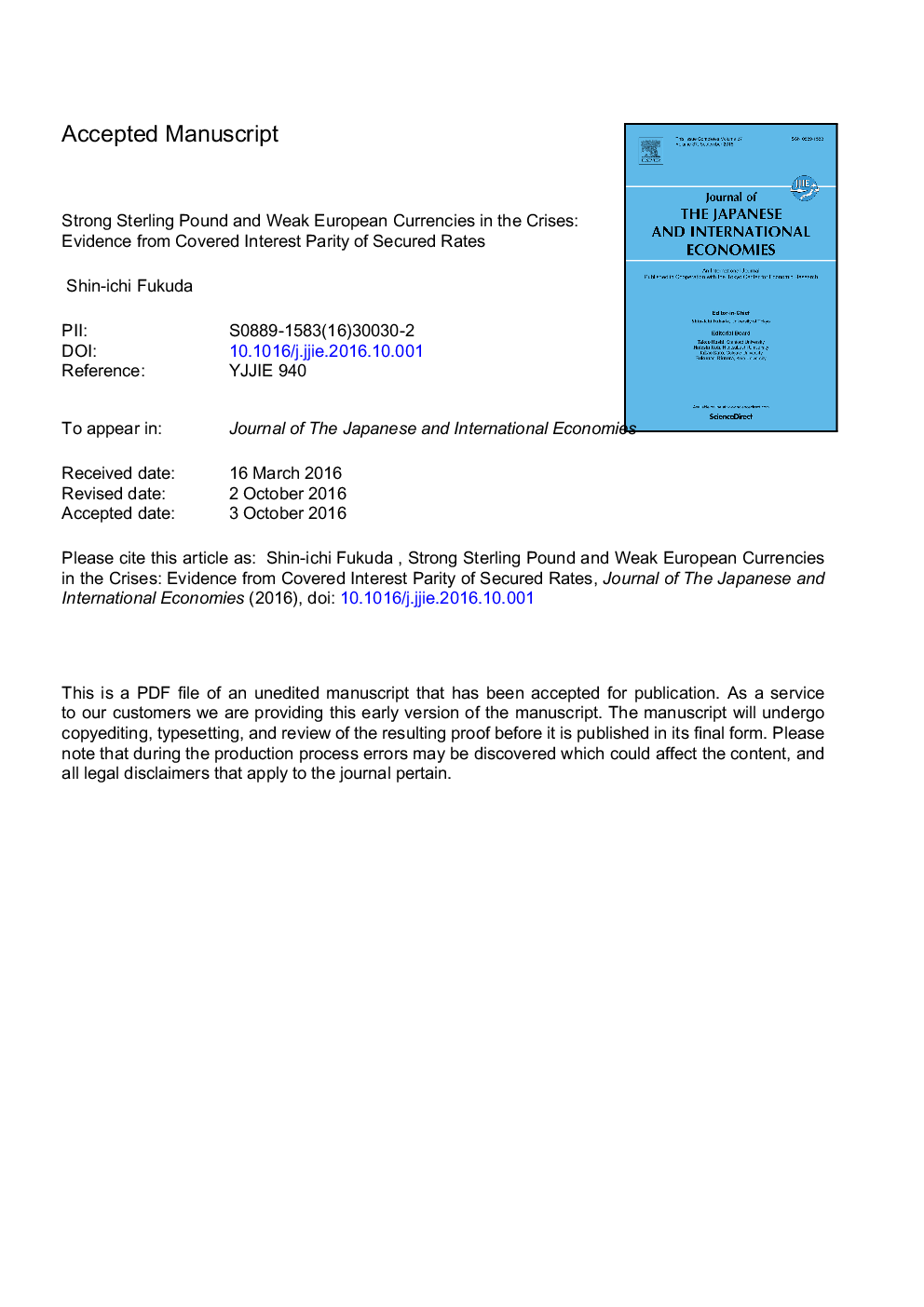| Article ID | Journal | Published Year | Pages | File Type |
|---|---|---|---|---|
| 5101264 | Journal of the Japanese and International Economies | 2016 | 40 Pages |
Abstract
In the post Lehman period, the interest rate of the US dollar became low on the forward contract because of“flight to quality” to the international currency. However, in the Euro crisis, that of the Sterling pound became equally low, while the other European currencies such as the Danish kroner increased its their interest rate. By using secured rates, the following analysis examines why the Sterling pound and the Danish kroner showed asymmetric features in deviations from the covered interest parity (CIP) condition. The regression results suggest that there was a structural break in the determinants of the deviations across the European currencies in the two crises. Currency-specific money market risk was critical in explaining the deviations in the global financial crisis (GFC), while EU bank credit risk and global market risk were useful in explaining the deviations in the Euro crisis. In particular, EU bank credit risk and global market risk had asymmetric effect on the deviations. The asymmetry explains contrasted features between the Sterling pound and the Danish kroner.
Related Topics
Social Sciences and Humanities
Economics, Econometrics and Finance
Economics and Econometrics
Authors
Shin-ichi Fukuda,
